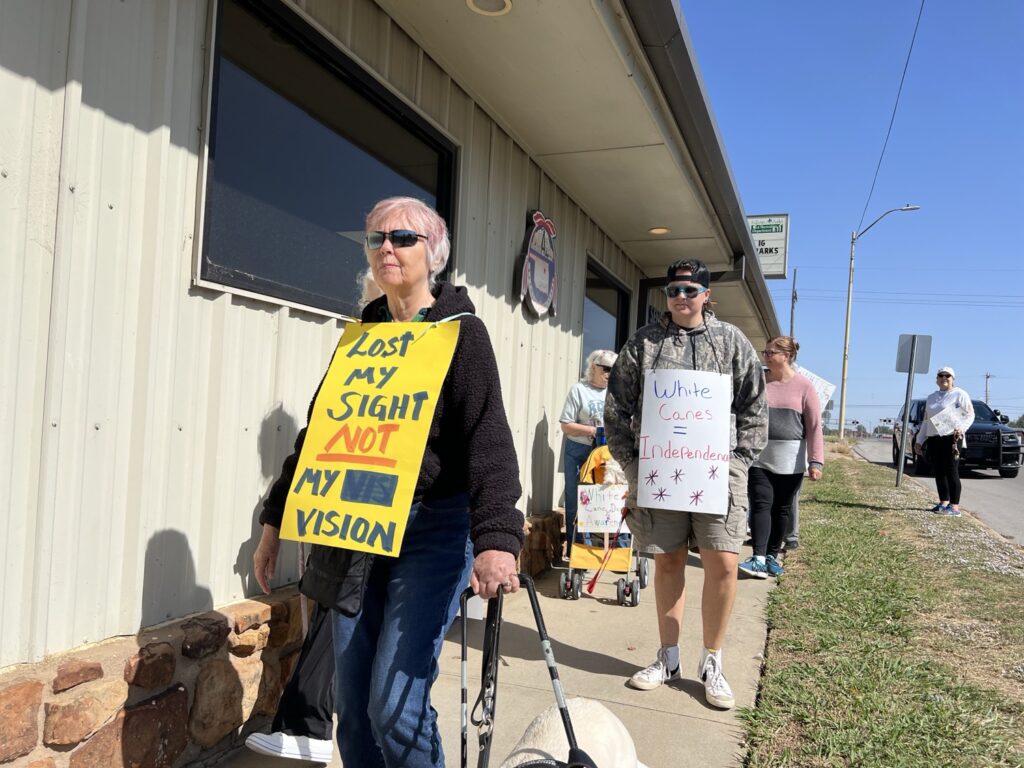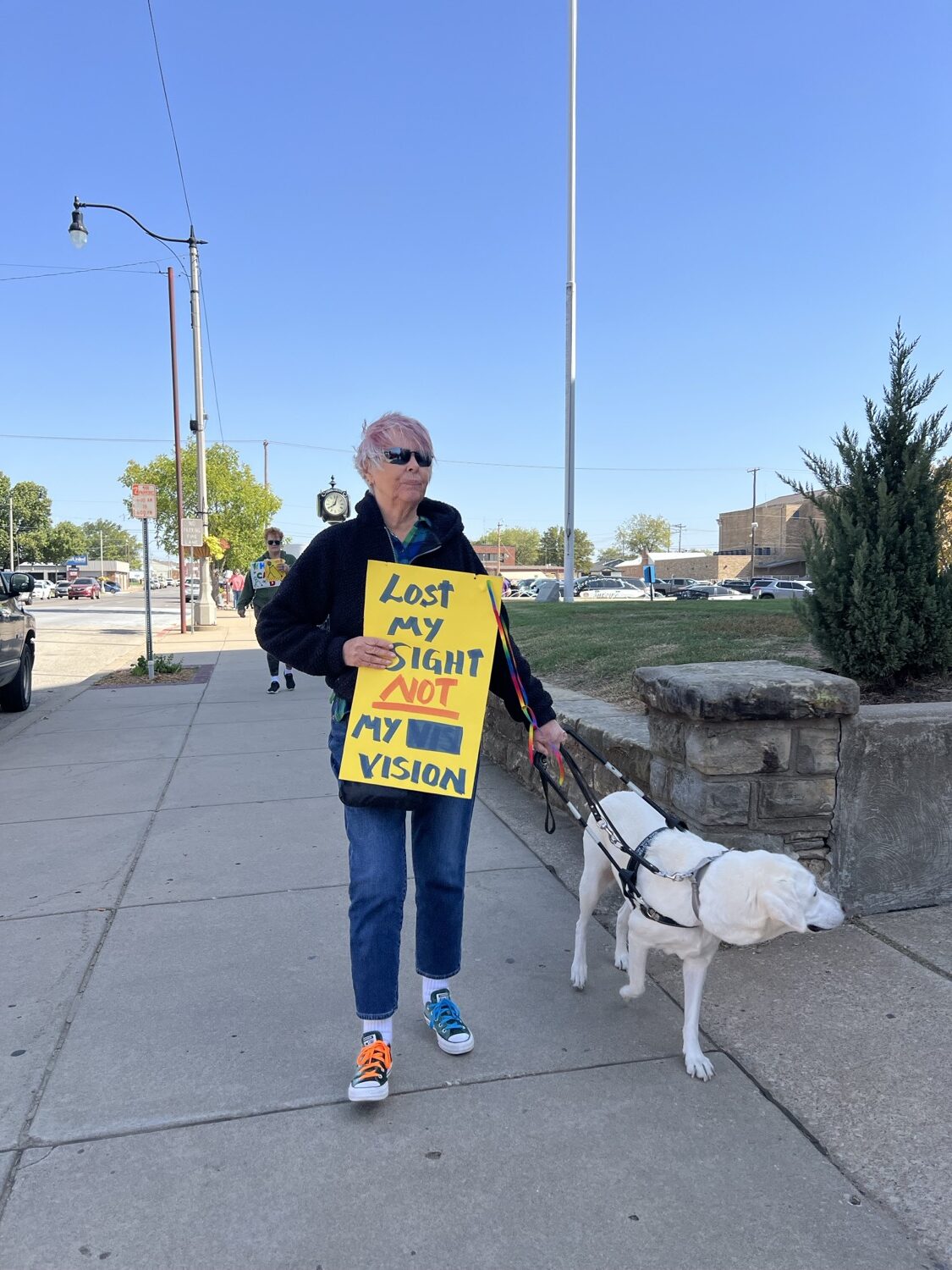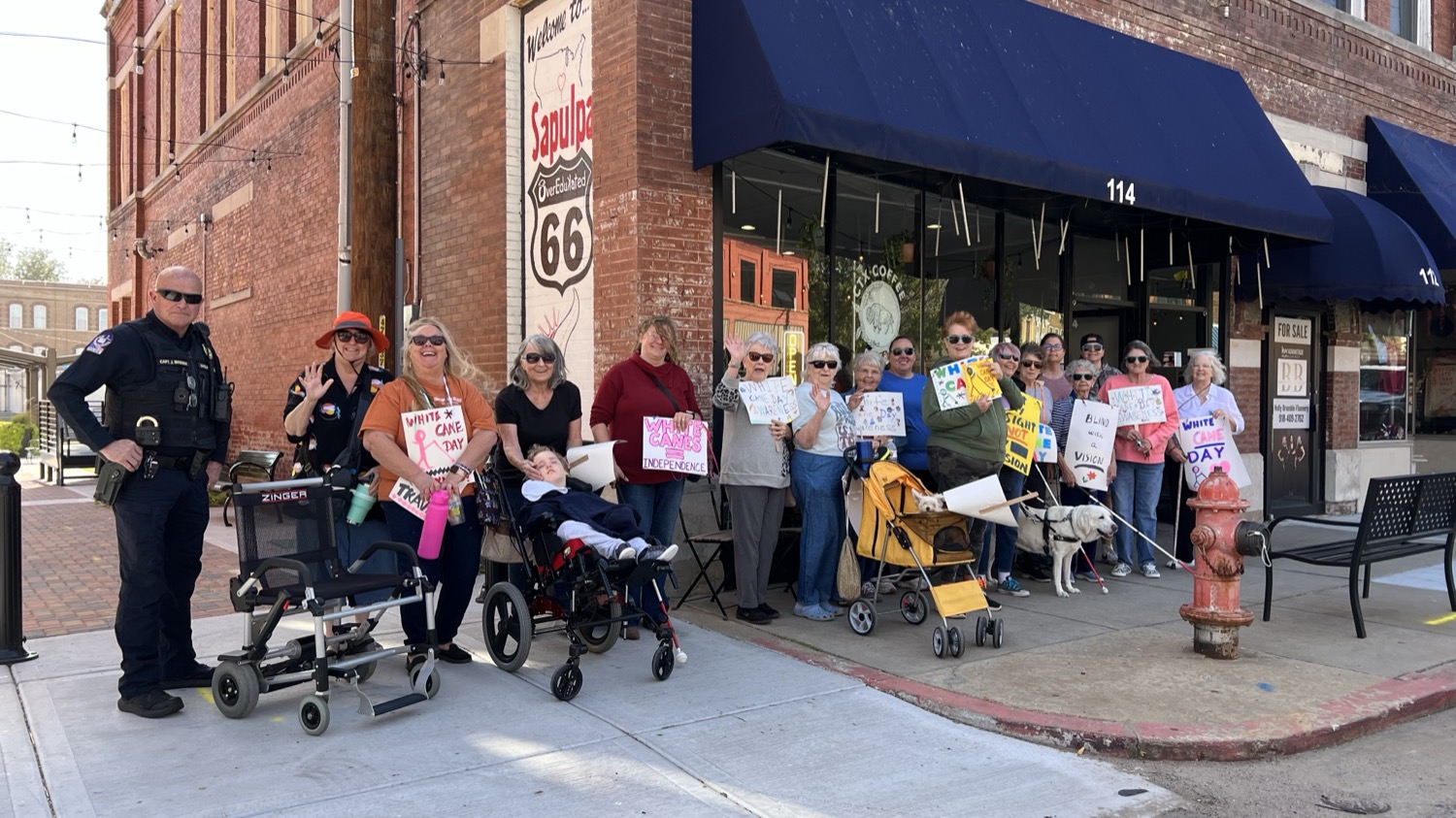“White Cane Awareness Day” was officially designated by Congress in 1964 to celebrate the independence and equality these tools provide individuals who are partially or wholly blind. During a presentation at the Sapulpa City Council meeting on October 7th, a proclamation was made, formally designating October 15th as White Cane Awareness Day in Sapulpa. Mayor Craig Henderson read, in part, that he would “hereby call upon our local educational institutions to offer full opportunities for training to blind persons; upon employers and the public to utilize the available skills of competent blind persons and to open new opportunities for the blind in our rapidly changing society; and upon all residents to recognize the white cane as a tool of independence for blind pedestrians on our streets and highways.”
Sapulpa Parks decided to support the Oklahoma Sight Impaired Group, a social group of individuals who are blind or have low vision that meet monthly at the Sapulpa Senior Center, as they organize a walk on October 15 to spread awareness of Oklahoma White Cane Laws and celebrate the independence of these individuals in our community. At roughly 1:30 pm, the group of supporters left the Senior Citizens Center and began their walk to CTX Coffee in the blustery October wind. They were given a police escort to ensure the group arrived safely at their destination.
The group was mostly led by Jeannè Gates, a legally blind woman in her 80s who has to walk with a white cane and her trusty white labrador named Tuesday. She had no hesitations about promoting the importance of white cane awareness, nor about discussing her handicap with Sapulpa Times. The sign she wore appropriately said, “Lost my sight, not my vision.”


Gates lost her sight after suffering aneurysms in both of her eyes, beginning in 2007. Having lived all of her life with vision until then, she described the process of losing her sight over time as similar to losing a spouse. “You go through a grieving period,” she said. “The first color I lost was green, and it was my favorite.”
Gates says she’s now legally blind and only see fuzzy shapes of varying degrees of darkness. “I have one tiny dot in one eye that I can see pretty clearly, but that is it.” She says she can still recognize people when they walk into a brightly lit room once she’s able to get familiar with their shape and how they walk.
Fitting with the fact that White Cane Awareness Day is a celebration and not a memorial, Gates says she has not let her impairment keep her from enjoying life. She frequently takes long trips and will be gone for weeks, visiting some other part of the world. “Tuesday has got to be one of the most well-traveled dogs alive,” she said. “She’s been on cruises and everything.”
Tuesday is the white labrador Gates received in 2015 and relies on regularly. At 8 years old, Tuesday is scheduled to retire as a working dog next year, but she’ll stay in Gates’ care for the rest of her life, most likely. Gates says she’s not sure she’ll try to replace her. “It’s a big job, to train a dog and get them used to working. I’ll be 83 next year…I’m not sure I’m up for it.”
On a trip to France, she and Tuesday were able to climb the Eiffel Tower for free. She remarked on the difference in behavior in Europe vs her experience in the United States. “People are nicer in Europe than here,” she said.

American’s apathy toward the impaired might come from a lack of knowledge and awareness, part of the problem White Cane Awareness Day is trying to solve. Sapulpa Parks led up to the day with factoids on social media about White Canes. For example, white canes have different patterns to indicate varying degrees of vision loss: a white cane with a red bottom indicates low vision, a solid white cane indicates no usable vision and a red and white cane indicates deafness and blindness. Additionally, those using white canes do not have to use the crosswalk when crossing the street. Situations like these illuminate the need for more awareness regarding those using white canes.
Even at home in the States, Gates does a lot of traveling, visiting several sight-impaired support groups in Sapulpa, Jenks, Kiefer and Glenpool. She enjoys listening to audiobooks, and surprisingly, going to the theater. “A lot of them have these headphones where someone will describe what’s happening as everyone is watching the play,” she says.
Only the wholly or partially blind can legally carry and use a white cane in public. Someone deceptively using a white cane in public is committing a misdemeanor, according to Oklahoma state law.








